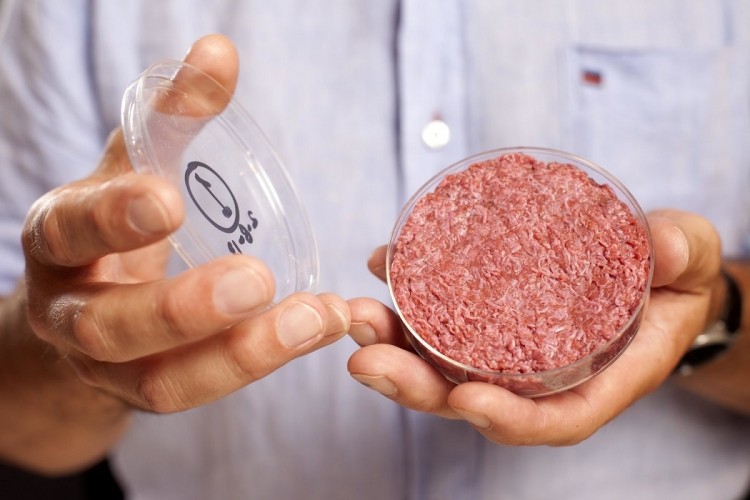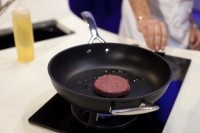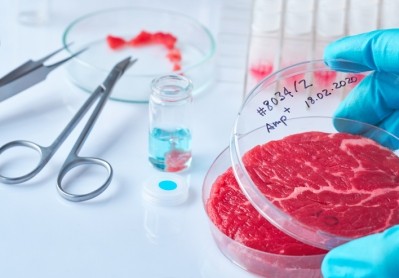Nutreco gets behind Dutch cultured meat pioneer

“As the global population continues to grow, the increased demand for protein will place more pressure on our food production system. If we are serious about feeding the future in a sustainable way, we will need to produce protein from a variety of sources, including animal agriculture as well as alternative proteins,” said Nutreco CEO, Rob Koremans, in a release.
Lowercarbon Capital, a new US-based venture capital fund led by Chris Sacca, has invested in the cultured meat producer as well; that fund backs technologies that have the potential to ‘heal the planet’, ones that can have a positive impact on climate change.
Mosa Meat’s first cell-based burger product cost €250K and was funded by Google co-founder Sergey Brin. Since then, product development included adding myoglobin, meat's red color, adding fat tissue, developing a culture medium that is free of Fetal Bovine Serum (FBS) and designing a bio-production process that can be scaled to industrial volume.
The level of investment from either party was not disclosed.
Nutreco and Lowercarbon Capital are joining M Ventures, Bell Food Group, and other investors and advisors in the cell-based meat company to date. Prior to this latest funding development, Mosa Meat had raised €7.5m since it created the world's first clean meat hamburger, with CSO Mark Post in 2013.
Building an ecosystem
Maarten Bosch, CEO of Mosa Meat, told FeedNavigator that the company, following many years of research and development work in the lab, has a clear vision of what it would take to bring cultured meat to the market at a large scale, at a cost level that is competitive with traditional meat. “But [that vision] requires a whole value chain or ecosystem that we could never build ourselves. In the last few years, other companies are beginning to see the opportunity and they have reached out to us.”
The cultured meat production process sees a sample of cells taken from a cow, with those cells put into a bioreactor. Inside the tank, the cells are fed a growth medium – a nutrient rich soup that enables them to grow and divide or proliferate.
While there is still a lot of uncertainty around the cultured meat business model, the regulatory pathways and best strategy for market entry, one thing is clear and that is the cost of growth mediums used in the manufacturing process must be massively reduced, he said. They can reportedly cost around US$400 per liter.
What Nutreco brings to the table…
“To really introduce cultured meat on a global scale, at the right cost level, we need a supplier of nutrients to feed to our cells, a company that can supply us with a steady and cost competitive stream of such raw materials. And that is where Nutreco fits in. The partnership consists of two elements, one is investment and the other one is collaborative, exploratory work to enable us establish that part of the future value chain together,” said Bosch.
The raw materials that Nutreco can supply would be “good enough” for Mosa Meat applications if not at the pharmaceutical grade of the raw materials it currently relies on, a factor that will have a huge impact on the cost of growth mediums. “That is a big enabler,” he continued.
The sustainability angle is one of Nutreco’s big motivators, it also sees the business opportunity, said Bosch, adding that the animal group’s interest in Mosa Meat underscores its visionary approach.
Commercialization challenges
Most Meat wants to create pure meat, not a mixture of cells with plant-based carriers, as well as non-GMO and full tissue meat. “Those objectives set us apart from our competitors.”
But a gap in terms of availability of advanced bioreactor technology is a challenge to enable it reach the industrialization stage of the game.
In the Mosa Meat process, following the proliferation phase, the bioreactor contains a soup of cells, they are harvested and put in another type of bioreactor for the differentiation phase, where the cells start to form structured tissue. “The proliferation phase has been done already on the large scale but more for applications in the medical field, like antibodies, so those bioreactors are relatively easy to source. But for the second part of our process, the differentiation phase, bioreactors simply don’t exist yet for doing that at the large scale… that is something that needs to be fully developed, and that is work that still lies ahead of us,” said Bosch.
So, is cultured meat still a long way from landing on our dinner tables?
“Well, I hope that, in 2022, we can start, on a very small scale, to introduce products into the market. Of course, that is still dependent on regulatory approval.”
Regulation
A lot of regulatory bodies are looking into cultured meat, on how to approach it, he says.
“No single company has filed a dossier yet, so there is no actual case for a regulatory body to sink its teeth into. It is still unchartered territory.”
But he does see a willingness on the part of regulatory organizations, in different regions globally, to tackle it.
Environmental merits of cell-based meat
Mosa Meat is working together with its competitors and other players in the field, in conjunction with an independent body in the Netherlands, CE Delft, to generate concrete data on the overall environmental impact of the cultured meat production sector.
Mosa Meat makes its sustainability case:
“Meat demand is growing fast. By 2050, the world’s population will surpass 9 billion, and meat demand is expected to be 70% higher than today’s level, according to the Food and Agriculture Organization of the UN.
“It’s easy to calculate that we simply don’t have enough land and water to increase meat production by 70% using livestock. This means that we either have to reduce our consumption of meat or find a more efficient way to produce it.
“It is projected that cultured meat production will use up to 99% less land, and 96% less water. This greater efficiency will make it possible to provide the world’s growing population with real meat in a sustainable way.”
Mosa Meat, a spin-out of the Maastricht University, still carries out a lot of research at that academic institution.
“However, we have our own facility as well, where, currently, our laboratory is being built, and the other half is empty, waiting for our pilot plant to be built. We are organizing another financing round later this year to pay for that. But we can hit the ground running once we have the financing in place.”
Watch out for our interview with Nutreco CEO, Rob Koremans, next week, where he will expand on the merits of his company’s involvement in such a venture.















